Our preview coverage for Art Stage Singapore 2016 continues this week with an interview with Zoe Butt, founding director with Dinh Q Lê of Sàn Art, Vietnam’s first “kunsthalle”. The article will also appear in Catalyst, the magazine of Art Stage Singapore.
Guerilla Kunsthalle & Saigon Surfer: An interview with Zoe Butt, director of Sán Art
For most, Vietnam is an idea formed, since the beginning of the twentieth century, by a foreigner’s idea of the foreign, rather more than by its residents. Whether as French chattels, Russian foil or American paranoia, whether as stoic or inscrutable players in Indochinese politics (beware the colonial adjectives), or as a vast teetering MacGuffin for American films in the 1980s about American self-doubt, or just self. As boat people, the original refugees of the TV age, though rarely for those who stayed, contented or otherwise. As a diaspora from Los Angeles to Prague, Washington to Sydney, purveyors both of doctors and other professionals, as well as the now ubiquitous Pho noodle soup in Western metropolises. Devastated but not crushed by decades of war, Vietnam’s voice was still not able to rise above the din of opinions flung upon it.
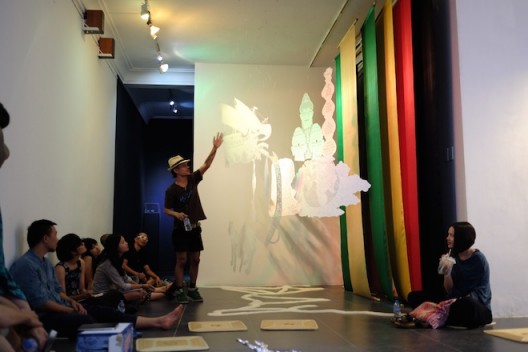
From the 1980s onwards it was mediated internationally as entertainment in films as varied as Francis Ford Coppola’s Apocalypse Now (1979) or Sylvester Stallone’s Rambo (1985). In his 1852 essay, “The Eighteenth Brumaire of Louis Bonaparte”, Marx noted that, “Hegel remarks somewhere that all great world-historic facts and personages appear, so to speak, twice. He forgot to add: the first time as tragedy, the second time as farce.” (1) We might add, the third time as entertainment. Only in the 1990s did a Vietnamese voice begin to chime internationally, including in films like Tran Anh Hung’s The Scent of Green Papaya (1993). But art was another matter.
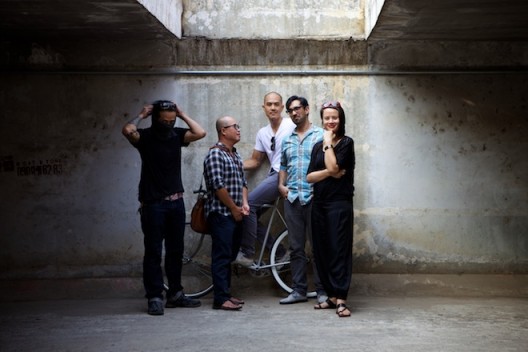
Model Spaces
Contemporary art scenes—that is, ecosystems equipped with galleries, collectors, fairs and private museums—developed relatively quickly in China and also in Korea, Indonesia, and the Philippines. In China, many of the original serious art spaces evolved into commercial galleries, including Beijing Commune and Long March Space in Beijing, and Vitamin Creative Space in Guangzhou (though the latter is more of a hybrid, whose only real relative is STPI, in Singapore). In South East Asia, things developed more slowly and less commercially, with Green Papaya in Manila, SA SA BASSAC in Phnom Penh, and in Vietnam, Sàn Art, currently led by Zoe Butt. After successful careers at the Queensland Art Gallery, in particular working on the Asia Pacific Triennial of Contemporary Art, and then as one of the directors at Beijing’s esteemed Long March Space, Zoe moved to Vietnam to develop Sàn Art into Vietnam’s sole serious independent art space. randian 燃点 magazine, for Catalyst, spoke over Skype with Zoe about how she made the journey to Saigon (the locals still call it that), and Sàn Art’s ethos and program, and also its plans for the future.
Chris Moore: Where are you now?
Zoe Butt:I am on the coast in Hoi An, a city founded by the Cham people!
Chris: So where did you grow up?
Zoe:I am of Hong Kong-British ancestry. I was born in Newcastle, Australia. The Chinese side of the family has a history of trade in Vietnam, so I have ancestral family shrines here in Vietnam.
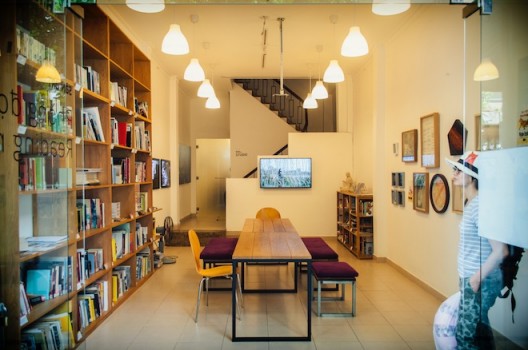
Chris:Which came first, art or Vietnam?
Zoe:Art! My mother nurtured my love of art from when I was very, very young. She used to take me to museums on the weekend as a fun outing and she used to ask me to ‘read’ paintings, she would ask me for my opinion of what was happening in the paintings. So my love of art started very young! And my particular passion, which is contemporary Asian [art], I guess that was nurtured in my childhood from living, as an Australian, as one of only two non-white people at my school in Newcastle at that time—there was me and a Lebanese. So I was struck by possessing an historical imagination, due to the objects we had in my family’s home, that my friends lacked. So it gave me some kind of question as to where I came from and what was my relationship to it. I had a heavy sense of enquiry of how Asian traditions are interpreted today and I was struck by the visual arts as a powerful language that didn’t possess a right or a wrong meaning. And I think that the visual arts have a tremendous capacity to allow difference of meaning and interpretation, something that is lacking in society today.
Chris: And what drove you to Vietnam?
Zoe: A long story! The short version is that after leaving the Queensland Art Gallery where I had been for 7 years working in the Contemporary Asian Art department—
Chris: I’m from Brisbane!
Zoe: Ha! Yes, I was at the gallery for 7 years. I worked on the 2002 and 2006 editions of the Asia Pacific Triennial, buying, commissioning, re-writing policies, developing the entire collection really through the APT, working with an incredible team.
Chris: I have to say the APT really is one of the most important ‘biennale’ exhibitions in the world. It’s absolutely extraordinary.
Zoe: Yes, I agree. I think it’s lacking in collective rigor and vision at the moment though, which is a little sad. The first four editions were groundbreaking for the study of contemporary art in Asia—a task undertaken with much expertise from across the region. Since 2006 though, the proliferation of biennales across Asia has challenged the seat of relevance for the APT. I don’t think that, institutionally, they have managed to keep up. But that’s more about Australian right-wing politics than anything else.
Chris: Actually I don’t think the problem is just right-wing. I think Australia has a fundamental problem in its arts community, left and right.
Zoe: Yes, sadly support for cultural diversity has been increasingly, disturbingly narrowed in the arts in Australia. Research particularly is heavily bureaucratized. Anyway, as a consequence of my time with the APT, I had the good fortune of working with Lu Jie from Long March Space and Dinh Q Lê, whom I currently work with.
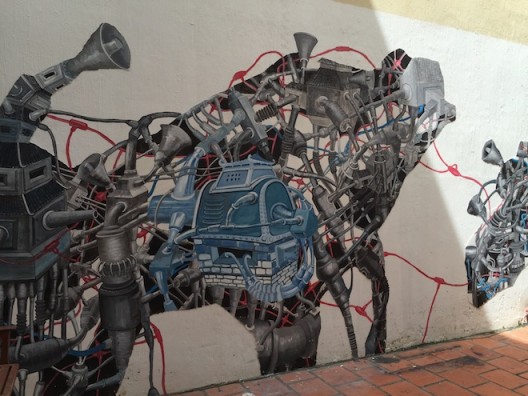

Chris: How did you move to Beijing?
Zoe: On the opening night of APT in 2006, Lu Jie asked me if I would like to work for him. He had hinted at it over the previous two years of working together on the APT but I didn’t think he was serious. And then a few hours later, Dinh asked me if I would like to come to Vietnam, and I said yes to him too! I woke up the next morning thinking, oh my god, last night I said yes to two artists to move to Asia! I can’t do both at the same time! In a way, though, I did end up doing both at the same time. I moved to Beijing and then for the next four years I was on a regular sojourn to Saigon before I actually moved there in late 2009.
Chris: What was it like working with Lu Jie?
Zoe: Lu Jie is like a challenging, intimidating older brother to me, and I like to think I’m one of those endearing younger sisters to him! Ha! I moved to Beijing to work with him. In 2006 the bubble of Chinese contemporary art at auction was just phenomenal and I grew to be highly suspicious of the narcissism in the practice. And Lu Jie and I would often sympathize and agree on this and say that there is a giant need for the purview of what China is looking at to be expanded. And because of the synergies on that note, I thought it worthwhile working with him. I was at Long March for three years, from 2007 to 2009, and I learnt a tremendous amount. I was director of international programs and then became co-director with him in 2008. I think he is one of the most underrated intellects in the country.
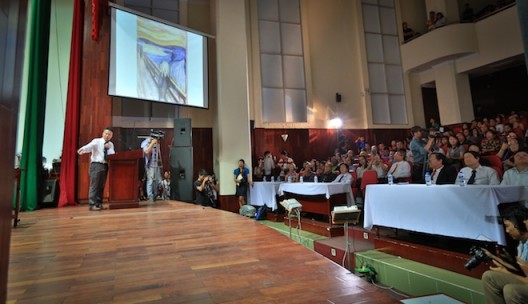
Chris: And during your time in Beijing you kept visiting Vietnam?
Zoe: My relationship to Vietnam really occurred as a consequence of developing work from Australia and keeping in contact with regular visits before moving and becoming co-director of Sàn Art in 2009 with Dinh, and then soon after becoming the Executive Director.
Chris: So you were at Sàn Art right from the beginning when it was established in 2007?
Zoe: Yes. I was ‘International Adviser’ at the time. I didn’t want to be called co-founder because I didn’t think it fair, because I wasn’t actually on the ground, so to speak, and I wasn’t Vietnamese, and I felt the cause was really driven by Viet Kieu [overseas Vietnamese]—and the experiences of that and the historical associations of that.
What is Sàn Art?
Chris: Is Sàn Art also in this hyper-gallery situation; a hybrid gallery-Kunsthalle like, for instance, STPI, and Vitamin Creative Space, or the former Universal Studios and Long March Projects, who use commercial activities to fund their non-profit aims?
Zoe: Sàn Art operates in ethos as a non-profit organization. It does not have a focus on commercial at all. It is supported in some way by the Vietnam Foundation for the Arts in the U.S., a non-profit charitable organization established by Dinh Q Le in 2006, primarily to act as a fiscal agent for Sàn Art’s operations in Vietnam. It means we can apply for international foundation grant money with the correct tax codes. So our financials are largely driven by foreign donations—and I don’t know how long we can sustain this model, to be honest. We have been running for 8 years as a model committed to supporting emerging artists who experiment in a critical mode with their production, thus our activities encompass artists making new work, about 70% of our work is educational programs, and I would say that, at the moment, our signatures are our artist residency program, which is called Sàn Art Laboratory, and then our lecture/workshop/residency program ‘Conscious Realities’, which focuses on Global-South Memories. We are locally registered as a ‘family business’ which means if someone wants to buy the art that we showcase then yes, we can and do sell, but the task of sales and marketing is not our aim; we have no staff focused on this.
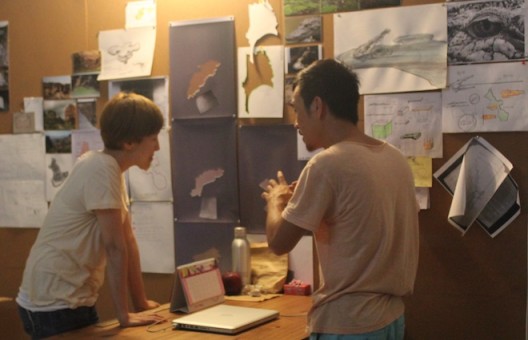
We are quite different to what, say, Universal Studios [Boers-Li] or Long March or Tang [Contemporary] do, or even Vitamin Creative Space, because of our focus on knowledge production. We are much more geared as a think tank for bringing artists’ awareness to not only to their region but also trying to expand and act as a kind of example to the local cultural and educational institutions as to what visual arts can say, what capacity it can act with—because, politically speaking, art and culture in Vietnam is still dictated by government agencies. It is extremely difficult and thus we have no local support.
Local collectors
To operate as a commercial entity in Vietnam I think would be quite a challenge. The people with money here are still just buying Western luxury brands. Still buying the art that is oil [paintings]—typical landscapes or pretty women wearing traditional ao dai dresses. One of the things Sàn Art is currently investing in is building a local collector base, by creating programming where they can learn what contemporary art is.
The infrastructure is so thin in Vietnam. We have so few contemporary art spaces.. Even Sàn Art lost its space in February because of the lack of funds. So because we don’t have any significant space with which to show contemporary art, it’s very difficult to demonstrate to someone with cash that, oh, this is what you should invest in! So, we’re at a little bit of a critical juncture right now, though there are people with influence discussing the need for purpose-built space for contemporary culture—really hope that these conversations turn into something concrete!
Chris: Is it like in other parts of South East Asia, such as Indonesia, Malaysia, the Philippines even, where the Sinosphere—the Chinese diaspora—drives collecting? It’s not exclusive, but it’s really driven by this group. Of course, there are cultural reasons for that, with China’s over two thousand years tradition of collecting.
Zoe: I wouldn’t say that it is driven by China or South East Asia either. Mainland Chinese collectors still have an abhorrence towards the collection of much South East Asian art. It is the Chinese migrants based in the Philippines, in Indonesia…
Chris: Yes, that’s what I mean.
Zoe: Definitely in Indonesia’s case, for sure. In the Philippines’ case, I would say, no, it is totally Philippine, totally local. Malaysia, yes, it’s probably Chinese migrants. In Vietnam, the Chinese minority is treated with suspicion and there are complex reasons for that.
Chris: Well, there are historical reasons for that [ideological, diplomatic and territorial].
Zoe: Yes. There’s a lot of foreign Chinese investment in Vietnam’s economy but not the same level in local Chinese investment. And yes, it’s because of the history. The cause for very little investments in infrastructure in collecting here is a consequence of the political regime. It is highly censored. To do anything in Vietnam on a cultural level involves wading through a phenomenal amount of red tape. Even in an article in Vietnam News this past month, President Truong commented that he believes culture to be a key driver of social development but he cautioned that we should be wary of ‘foreign invasion’ and that we must be attuned to our own sense of traditions. They are totally hoodwinked into thinking that culture is dangerous!—there are ideological reasons for that of course.
Critical
It will be a long time yet before we can see an arts infrastructure critically engaging with its contemporaneity. That’s not to say that we don’t have artists already doing it—there are many, and it is those that Sàn Art chooses to nurture and to provide space locally and abroad with which to speak. And that’s something the government are highly suspicious of—they are aware of our networks. However they also understand there is a need and we are filling it—and they can’t.
Our programs are interdisciplinary. We work with engineers, anthropologists, musicians, writers, ethnographers, scientists….. We are in the business of trying to redefine cultural memory, to expand the local applications of art to living in the 21st century, because this postmodern sense of fragmenting our disciplines isn’t present in the education system here.
And now…
Chris: Where do you go from here?
Zoe: At the moment, we are focusing on artistic production—its social, conceptual and material histories and experiments. The residency program has been very successful. It focuses on South East Asian artists, not just Vietnam. Each residency runs for 6 months and 20 artists have been through the program. ASEAN’s recognition of the region as an economic network led to the relaxation of regional visa controls. (2) As a consequence, Sàn Art residency program has benefited from that, because there are now a higher number of artists moving into and out of Vietnam. There is a growing community that is regional instead of national. And I’m quite interested in the impact this can have on the narratives inside contemporary art. Previously most South East Asian artists possessed stories that spoke just to their own cultural memory but now we can see this bifurcating. If we continue to nurture knowledge through education, such as our Global South program ‘Conscious Realities’, I think we will see some really fabulous work come out of it.
So in the future…. we have many ideas! but will definitely aim to continue being an artistic and curatorial production house of a kind. In terms of Sàn Art’s physicality, I think you have to be flexible with the context. If it means going guerilla and we operate out of a little office space and focus on programs with our local and international partners, it wouldn’t be too different to what we are doing now. Ideally however, I am hoping to secure our own space. I am hopeful.
Notes
1. https://www.marxists.org/archive/marx/works/1852/18th-brumaire/ch01.htm
2. Association of South East Asian Nations
Contact—
Sàn Art
48/7 Mê Linh, phường 19,
Bình Thạnh,
Hồ Chí Minh
Vietnam
W www.san-art.org
T +84 8 6294 7059
E hello@san-art-org
